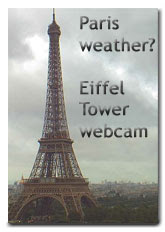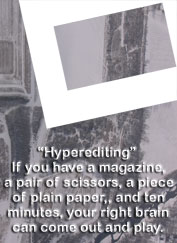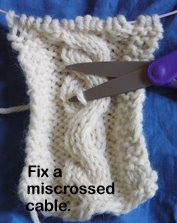.
Isn't this cute? I'd say it was about a foot wide. I wonder how much use it got -- that delicate porcelain and glass, all pristine.....
I wonder what was in the little bottles in the back corners. They have stoppers, on silver chains....
It's a good thing no one is going to offer me this box of goodies. I don't think I could say no.
And now for something completely different -- wrought iron. Isn't this cool? So light, so delicate.....
"Sign Bracket, 16th century, wrought iron with traces of paint. Flanders (Bruges)"
Imagine it with paint......
Love this, too. I apologize for the blur. At least we can see the dragon's teeth, and the leafy thing down by the place where the end of the flag pole goes.....
"Flagstaff Holder in the Form of a Dragon, 16th century, wrought iron, Italy"
Stone. 1533, France.
Wood. "Jewelry Casket, late 17th century, cherry wood, France (Lorraine)"
Alas, I did not photograph the id info on this. Something else I love but do not want to own. 1787 appears in the painted decoration.
I have failed to reproduce the color. The area at the top, with the white splotches, was distinctly bluer that in appears here.....
I say again -- this museum have everything else -- *where* are the textiles?!?
They have a LOT of the tools of war. Or, at least, the fancy parade-version of such things.... Were the ones that were actually used all etched and tasseled? I don't know, but I suspect not, for the most part, at least.
Very fancy sticks-with-pointy-sharp-things.
The id info says these were made in Germany and Austria, in the second half of the 16th century. It says they are "State Halberds" -- perhaps an indication that they were the parade version rather than the actual take-into-battle halberds?
It seems they know exactly who did the etching, at least for some of them, and for whose guard they were made. Kinda amazing, after all that time has passed.....
Love the group, as a group..... One purpose; many shapes..... Some so Star-Wars-y, some so insectoid.....
These, too, are German, but a bit earlier. At least, the one part of the info I captured says early 16th century for three of them.
More and more sharp pointy things.
This is also for you, Bro. Another cloister..... The colored stone makes the arches stand out, I think.
A textile! "Textile Fragment, early 16th century, silk weft-faced compound plain weave, with silver and gold threads, Turkey"
The threads in this piece are -- thread-sized. Bigger than modern sewing thread, but very fine. I am always boggled, looking at old textiles, to think that every inch of thread was hand-spun....
Imagine the time involved -- raising and tending the silk-moth caterpillars, reeling the silk, acquiring and preparing the dye materials, dying the thread, acquiring the materials necessary for loom building and building the loom, threading the loom, weaving every inch of the cloth by hand........
All of that, before making something out of the cloth......
These circle-thingies were probably on the order of a third of an inch in diameter. I did not mess with the color; this is no doubt too yellow (like nearly everything else in the museum).
Love each of these, and love them together..... What a spectacular feather! Beautiful.
Thinking about sketching -- this is very few brushstrokes...... Wouldn't you love to be able to do this?
"Bamboo and Sparrows, 1638 Edo Period, ink on paper, Shokado Shojo, Japanese"
I failed to capture the info about this. Love the shapes and colors; love the contrast between the geometric ... flowers? ... and the leafy leaves.
I mentioned there is a Japanese tea house, with it's surrounding area, in the museum. My feet rejoiced, walking on this uneven surface. (Thinking there's a lesson here for city planners/designers.... So many people have trouble with their feet -- what if the surfaces we walk on were not all pavement.........)
Love the decoration. Note nearly invisible decoration in the "plain" area.... (as always, click on any image to embiggen)
"Vase, 12th century (Jin Dynasty, 1115-1234), Stoneware with underglaze incised and slip decoration (Cizhou ware), China, The four characters translate: red flowers fill the courtyard"
More 3d wrought iron. Again -- so delicate a work, made with such a hard material.
"Floral Panel -- Chrysanthemum (one of a set of four), 19th century (Qing Dynasty, 1644-1911), Iron"
A terrible pic, but it shows how 3d it was.....
One final object from within the museum.
"Pebble, 1736-95 (Qing Dynasty, 1644-1911), Qianlong Period, 1736-1795, jade (nephrite), China"
Perhaps I do not know the definition of "pebble" -- this is a hand-full sized rock.
A spectacularly gorgeous, lovely, smooth handful of rock. If I could have one object I saw in the museum, this would be the one.
I am amused/bemused that not only can our squint-eyed drawings end up in museums, but our pebbles, too. I am still keeping the pebbles (and beach glass) I picked up on the beach in La Rochelle, France, in 2010, in the pocket of my jeans. They are not, I'll be the first to admit, anything like as spectacular as this.
The ability to appreciate the beauty of a pebble is one of the things I admire about eastern cultures!
.
Subscribe to:
Post Comments (Atom)








































No comments:
Post a Comment